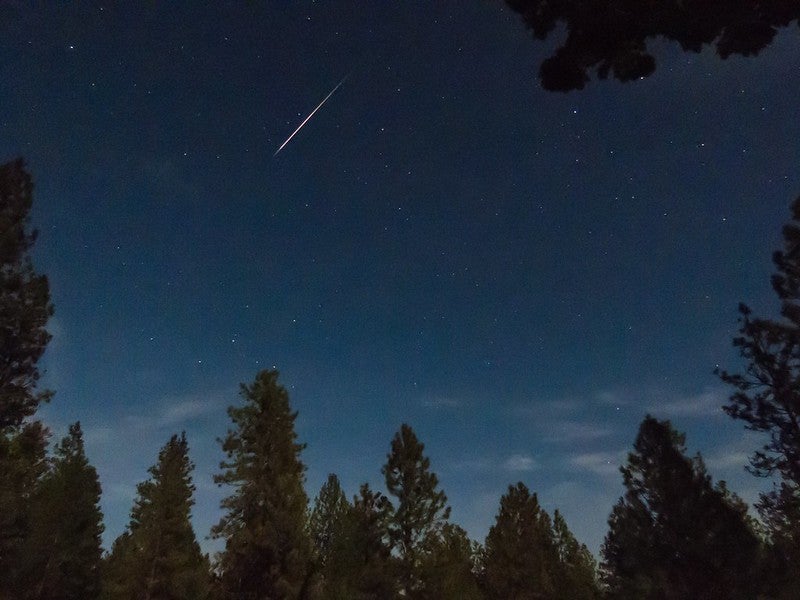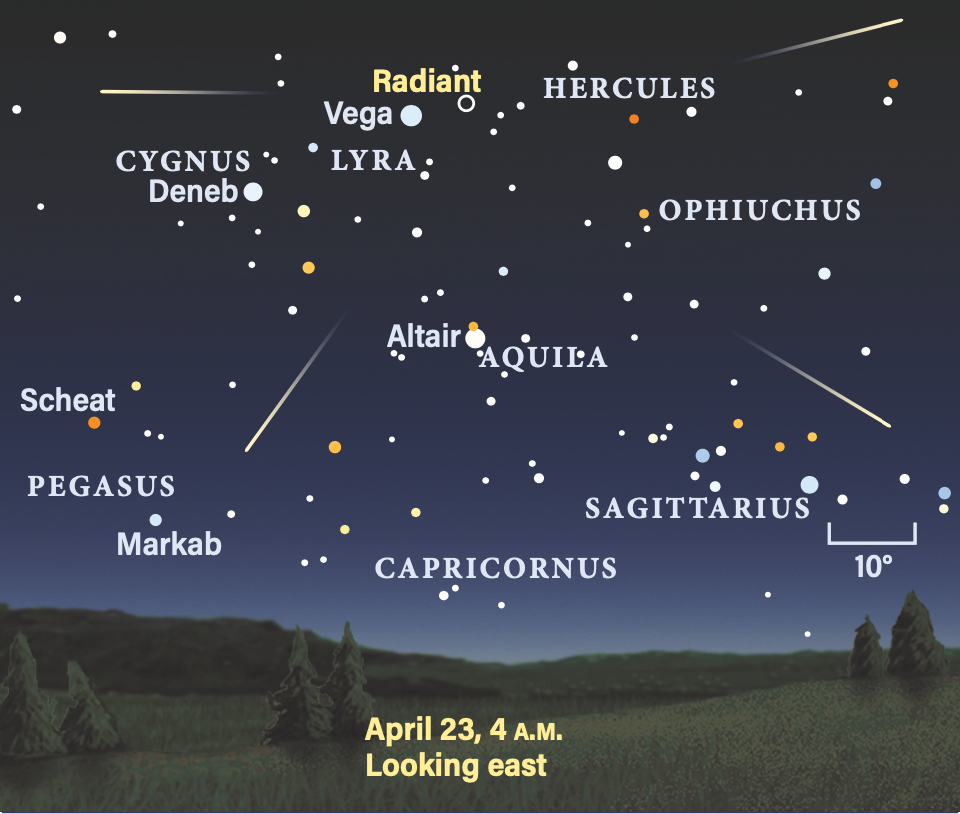
Tonight and tomorrow morning offer you a chance to see one of the oldest known meteor showers: the Lyrids.
The Lyrid meteor shower peaks late Monday night. The best time to catch shower meteors will be early on the morning of Tuesday, April 23. That’s because during the early-morning hours, observers are standing on the leading hemisphere of Earth as it travels through space, so meteoroids (the pieces of dust that burn up in our atmosphere to create meteors, the trails of light we see) are colliding directly with the atmosphere overhead.
How to watch the Lyrid show
The Lyrids originate from a point, called the radiant, within Lyra the Harp. That radiant lies near the bright magnitude 0 star Vega, which marks one point of the large Summer Triangle rising in the morning sky. Around 4 A.M. local daylight time on the 23rd, Vega will be some 72° high. Nearby, you’ll see the other two bright stars in the Triangle: magnitude 1.3 Deneb to Vega’s lower left, and magnitude 0.8 Altair to Vega’s lower right.

Vega will be the key, as shower meteors will appear to radiate from near this bright star. That means you’ll actually want to look to the regions of sky off to the side of Vega, about 40° to the north or south, to see meteors with the longest trails. Again, think of the radiant near Vega as where the Lyrids are hitting our atmosphere head-on. If you want to see meteors streak by, you need to look slightly away from this point.
You don’t need any equipment to watch a meteor shower — just your eyes! But there is a complicating factor: We are less than a day from April’s Full Pink Moon, as our Moon reaches its Full phase at 7:49 P.M. EDT Tuesday night. Because the nearly Full Moon will be so big and bright, its light will permeate the sky, washing out fainter shower meteors. This will reduce the maximum number of meteors you can see to about half a dozen or so per hour. But, because the Moon is so bright, the meteors you do see are sure to be the best, because only the brightest will prevail.
So, if the weather is pleasant, there’s no reason not to head outside early on Tuesday morning to catch some falling stars before the glow of twilight begins to light the sky.
What are meteor showers?
Meteor showers occur when Earth passes through the trail of dusty debris left by comets as they skim through the inner solar system on their path around the Sun. As comets close in on our star, the increasing temperature causes ices on or just below the surface to sublimate, turning directly from a solid to a gas. This process dislodges dust and rock, which trails behind the comet and creates its signature tail. Long after the comet is gone, that material continues to circle the Sun on the same orbit; if that orbit crosses Earth’s, we encounter these dust streams twice a year, generating meteor showers.
It’s worth noting that the dust burning up in our atmosphere to create the meteors associated with these showers is so small that it is destroyed completely, so nothing ever hits the ground. Meteorites found on Earth start out much larger in space, and it’s only if they are large enough that any material is left by the time it reaches the ground.
Lyrid meteors are born from the debris left behind by Comet C/1861 G1 (Thatcher), which has an orbital period of nearly 416 years.
According to NASA, the Lyrids have been observed for nearly three millennia. The first known recorded instance of this shower dates back to China in 687 B.C.E.









